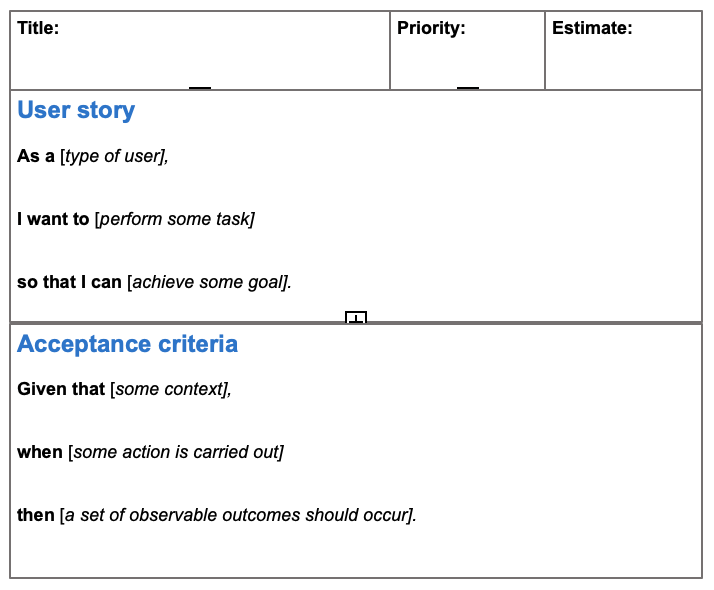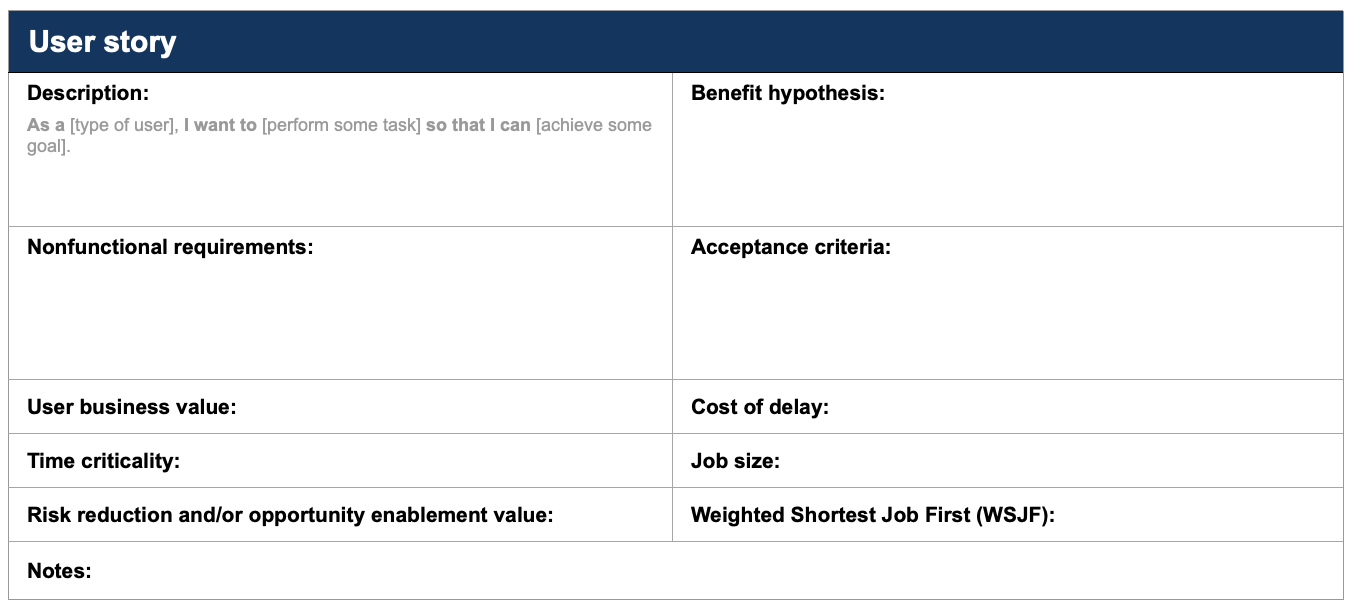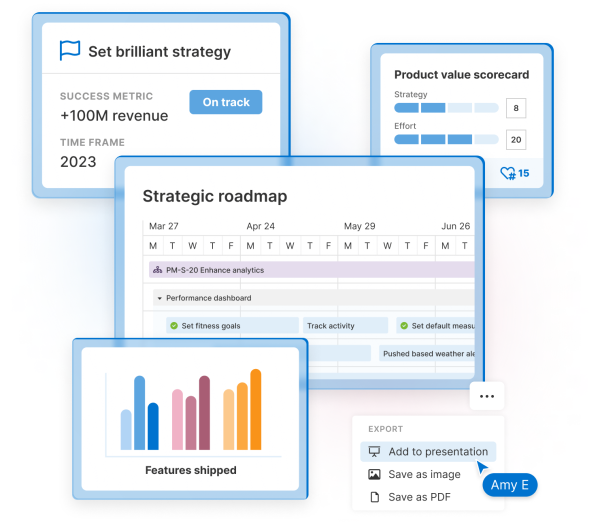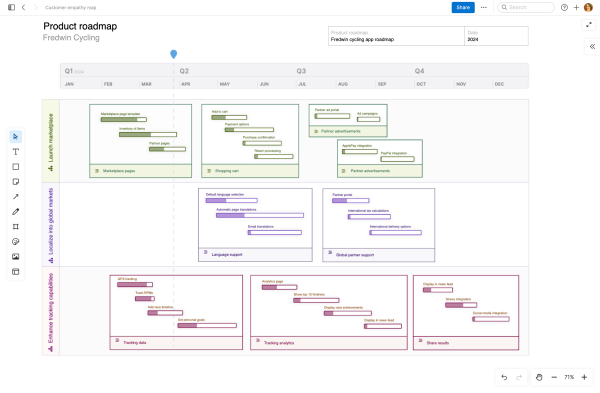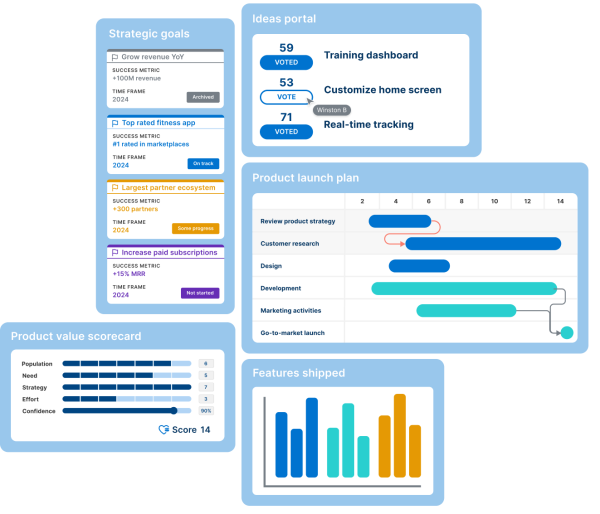User story templates with step-by-step guidance
Last updated: March 2024
A user story is a brief description of a product feature, written from the perspective of the end user. It clearly and concisely conveys what the user wants or needs from new functionality — often in one or two sentences. A product owner or product manager will typically write user stories, then share them with the development team.
User stories provide structure and meaning to agile software development work along with themes, epics, and tasks. Because they explain the desired outcome from the user's point of view, user stories help agile teams clearly understand the value a new feature will provide — versus focusing only on functionality.
In this guide, we will explore how to write effective user stories on your own or with the help of structured templates. Keep reading to learn more or jump ahead to the user story templates.
Jump ahead to any section to learn more:
How to write user stories
A user story captures the "who,” “what,” and “why” behind an item of agile development work — providing essential context for your agile development team. (Detailed technical requirements come later.)
You can use a simple formula to start writing user stories. This helps you get right to the heart of why a new feature matters to your customers. Here is the basic format for an agile user story:
As a [type of user], I want to [perform some task] so that I can [achieve some goal].
Let’s write an example for a fictitious company called Fredwin Cycling. The product is a social fitness application that connects athletes and promotes friendly competition. The company is considering a new GPS feature that allows cyclists to see their friends' routes. Here is how to write this as a user story:
As a cyclist, I want to follow my friends' cycling routes so that I can join them on rides.
The counterpart to any user story is acceptance criteria, which describes what the functionality must do in order to satisfy the user's goal. This helps developers know what to build and when the new feature is ready. Acceptance criteria must be met to consider a user story complete.
As with user stories, acceptance criteria is often written in a set structure. Here is a simple acceptance criteria template to accompany your user story template:
Given that [some context], when [some action is carried out], then [a set of observable outcomes should occur].
Let’s use our Fredwin Cycling user story to write an example of acceptance criteria:
Given that the cyclist wants to ride with friends, when they check the map view, then the routes of other cyclists in their social network should be visible.
These basic formulas are a great way to get familiar with writing user stories and acceptance criteria. If you are ready to start building out your own, take a look at the templates below.
Related:
Get started with user story templates
Below are user story templates you can use to capture new product functionality from the user's perspective and define your acceptance criteria. Each template offers a slightly different layout based on the level of detail you want to include.
The first template featured is a note template in Aha! software. It is really four templates in one — with sections for simple, epic, thematic, and SAFe® user stories. You can also create your own templates in Aha! Roadmaps for user stories, features, and requirements. In this way, your user stories would be integrated into the actual work items on your product roadmap.
Try the user story note template below — with a free trial.
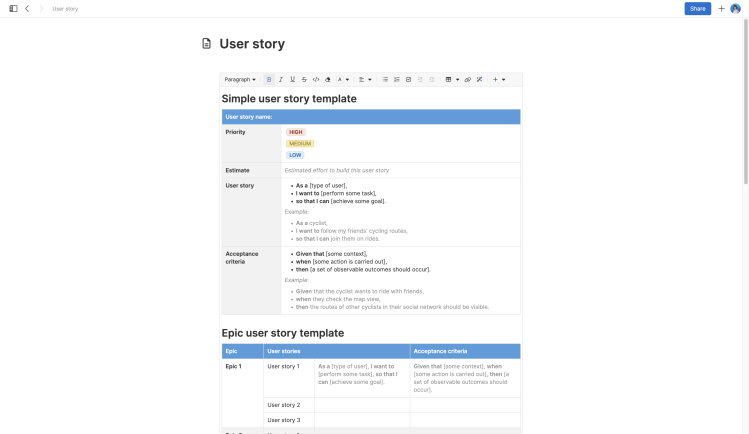
We have also pulled together some free Word and Excel formats below. You can download and customize these as you like:
Simple user story Word template
This starter template will help you write user stories and acceptance criteria and organize them in one easy-to-read view. You can also add details like priority and estimated effort.
Epic user story Excel template
Some agile teams use epics to group related user stories into a larger category. This user story template will help you capture epics and user stories in one place.
Thematic user story Excel template
Themes are at the top of the agile work hierarchy — above epics and user stories. They represent major investments in strategic initiatives and convey how you intend to make progress toward your overall business goals.
With this template, you can keep your strategy top-of-mind during the development process by associating your user stories with different themes. You can also add a column to include your epics if you use them.
SAFe® user story Excel template
Teams practicing certain agile methodologies may prefer to include additional details when writing user stories. For example, organizations that implement SAFe often add in the benefit hypothesis, nonfunctional requirements, and cost of delay.
Here is a more detailed user story template that aligns with SAFe methodology:
Well-defined user stories ensure clarity across the development team so you can prioritize what to build during the next step — user story mapping. Maintaining this focus on customer benefit as you continue on in the product development process will result in new functionality that customers love.
